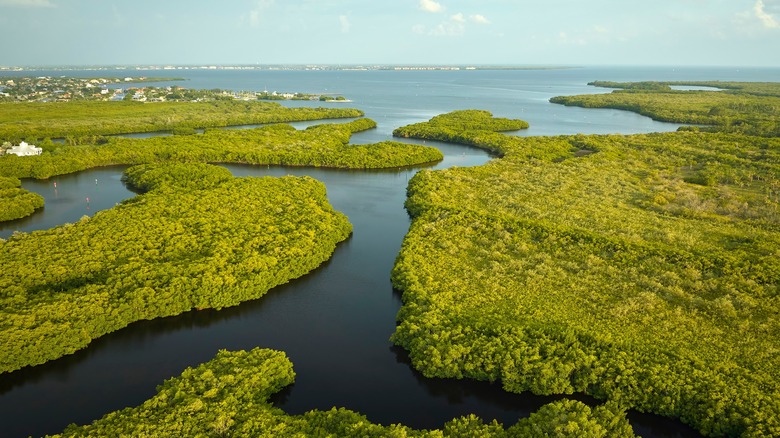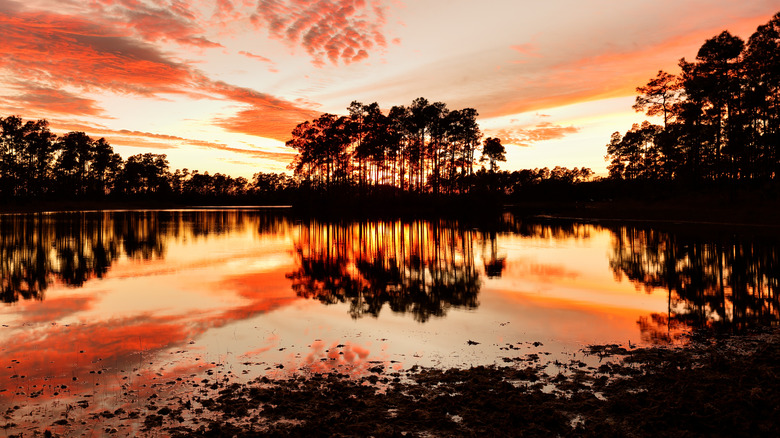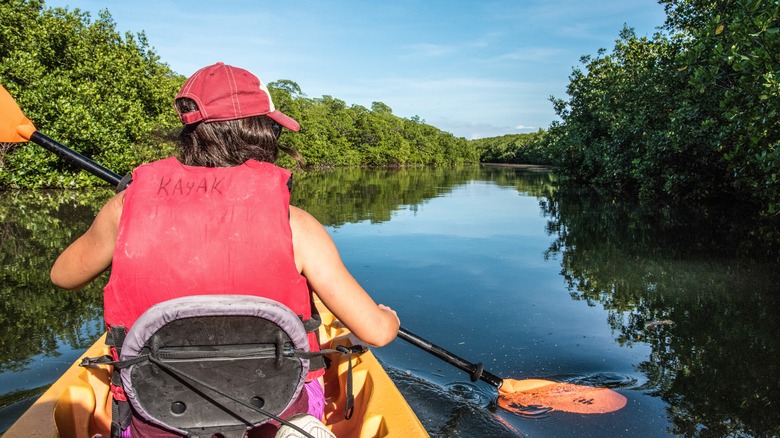Why One US National Park Is Considered 'In Danger'
The Everglades National Park is one of the most precious natural areas in the continental U.S. and a UNESCO-designated World Heritage Site. As the largest sub-tropical wilderness preserve in North America, it is not only home to the most substantial mangrove ecosystem in the Western Hemisphere but also the largest uninterrupted area of sawgrass prairie. The Everglades are also a booming migration corridor, breeding ground, and support habitats for all kinds of birds, reptiles, fish, insects, and land and water mammals, as well as a huge variety of plants. Not only that, but the Everglades also supply drinking water for millions of residents in Florida.
The Everglades ecosystem is totally unique from any other place in the U.S. — and possibly the world — and yet this area has been declared by UNESCO to be in critical danger due to the increasingly harmful impacts of climate change, water quality decline, and invasive species of plants and animals. Each of these problems threatens to upheave the delicate balance required to support such a complex ecosystem, destroying its ability to thrive.
These looming threats to the Everglades bring up a number of questions regarding, of course, what can be done to curb degradation, but also how this may impact the human activity that benefits from this incredible national park.
Restoring the Everglades can save Florida's tourism
Tourism is one of the leading contributors to Florida's GDP, bringing in nearly $86 billion in revenue and providing 1.5 million jobs in the state. Yet the share of that monetary contribution from Everglades National Park is shrinking.
In 2014, the National Park Service reported that Everglades National Park alone brought in an estimated $104.5 million in revenue to businesses and communities surrounding the park. Five years later, that number had dwindled significantly to $58.7 million. The impact of this decline in revenue could be the result of increasing environmental degradation, which in turn impacts tourism in the Everglades.
The redirection of freshwater inflows from the park's northern boundaries to urban areas and farms has created an imbalance in the Everglades water system. This makes the water saltier, and less habitable for native species. The wastewater from farms is then pumped out to the ocean on the east and west sides of the state, completely altering the ocean landscape that surrounds the Everglades — leading to algal blooms and red tide — and inflicting millions of dollars of damage on the park and local businesses.
However, it is estimated that for every $1 invested in the park's restoration, the state economy would see $4 in return. That means a "mere" $1 billion investment could bring in over $4 billion dollars in economic benefits to Florida industries, including construction, real estate, and fishing, but mainly tourism — a major boon for Florida's economy.
How to responsibly visit the Everglades
A walk in the park should take on a different meaning when visiting the Everglades. Though the park is suffering from human impact, there are still many ways that you can visit the Everglades and contribute to its upkeep and continued restoration efforts.
One of the most iconic features of the Everglades might also be the most impactful — airboats. These are one of the best ways to see the park, especially for the elderly and disabled, but also the most controversial. Granted, the boats are primarily used in shallow waters, while the propeller never goes below the water level, protecting most marine creatures from harm. However, the noise from these loud boats can scare off nesting birds and alligators.
A better alternative to exploring the Everglades would be a canoe or kayak adventure. Not only is this better for the local wildlife, but you can see more of the densely packed mangroves and you'll have a better chance of spotting more species that are unique to the park. If you're not keen on getting into the water with gators and crocs, opt for a guided swamp walk or bicycle tour instead. This is another low-impact alternative that will allow you to see the best of the Everglades — and hopefully keep them healthy.


